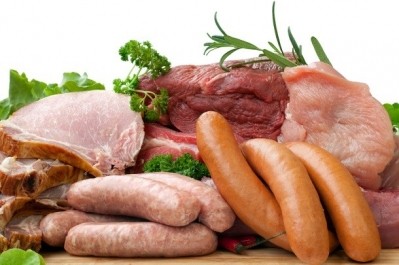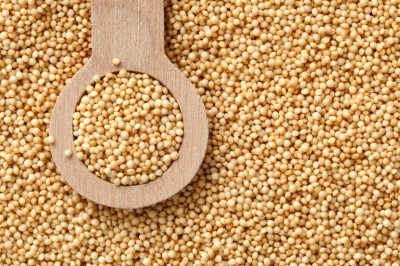High increases in organic production signals a maturing of the American market

Mercaris’ 2017 Organic and Non-GMO Acreage Report released Nov. 7 reveals US acreage for organic grains increased more than 30% over 2016 estimates and the total number of US farms certified as organic as of October 2017 increased 15% from last year to 17,188 farms.
“The rate at which corn and soybean certifications grew relative to the number of overall organic certification is particularly interesting,” in that they increased 17% and 26% respectively compared to an increase of only 1% for hay and alfalfa, which serve as a steady “barometer for what is going on in the US,” Ryan Koory, a senior economist with Mercaris, told FoodNavigator-USA.
“This significant increase signals US organic farmers are finally cycling past rotational crops, such as rye or buckwheat or other cover crops required by organic, and that larger crops are coming up from 2017 and 2018 to include those primary feed ingredients of soy and corn, which we think is the biggest market for the organic sector,” he explained.
He added that he is optimistic this is the start of an up cycle that, if all goes according to the trends, will not see a subsequent down cycle. He explained that as more farmers become certified organic, the US market will not see a significant down cycle because new organic farms will be able to meet the ongoing demand for these crops when the existing organic farms rotate back to legumes, cover crops and pasture in a few years.
Koory attributes this rapid growth in part to increased demand for food-based agricultural commodities, such as organic plant-based proteins, organic soy proteins and food-grade corn, which he says are a “quickly growing portion of the mix.”
However, he said, this “is still the smaller portion of where these crops are going. So, the other half that is growing this industry is increased demand for animal feed. And that has been led largely by rapid growth in organic chicken production, some growth in beef and also a lot of growth in the organic dairy sector.”
At the end of the day, he said, “this comes back to consumer demand for products that are made using organic inputs, whether it be the final meat product or packaged food goods which would be using organic cooking oil or food grade corn or wheat. It is all cycling back from that growth in consumer demand.”
Organic premium will hold steady for next 15-20 years
Even as the domestic supply of organic grains increases, there still is not enough to meet demand – meaning there is still plenty of opportunity for farmers to transition to organic and still secure a premium price for their efforts, Koory said.
He explained that while “the organic sector could expand to where it is as broad as the conventional sector, at which point the supply will balance out the demand and prices will equalize …. That point is still far away, by 15 or 20 years.”
His prediction is based partly on increasing consumer demand for organic and higher quality food, which likely will remain steady as the US economy continues to recover and shoppers have more money to spend on premium products.
Drop in organic prices at retail is not a harbinger of lower premiums
Koory also reassured farmers considering transitioning or organic that even through the retail prices of organic goods may be falling, the price at the farm gate is not.
“When you look at the retail point on the food chain, there are other factors in there that allow the price to go down without weighing down farmer’s prices. For example, changes in the infrastructure such as increase in organic grain handlers would make production of final products less expensive, but would not impact the premium created by an imbalance between supply and demand,” he explained.
Even with the promise of a long-term premium, convincing US farmers to go organic is challenging because in many ways it goes against the culture and mentality of the conventional industry, Koory said.
“The practices required for organic versus conventional are not diametrically opposed. A lot of conventional farmers use some organic techniques, but not all of them. So they don’t have to reinvent the way they farm. But they do have to look at things differently. So, instead of focusing on how to increase yield and mitigate weeds, the focus has to be on managing crop rotation and looking at the long-term benefits,” he said.
In addition, conventional farmers need to overcome the “hoity-toity stigma of organic,” and the potential judgement they could face from neighbors who have not made the switch, Koory said.
While this may sound like the least important consideration, it is a trying aspect as “many farmers hate to be associated with being elitist and they like to keep their perspective,” and their friends, he said.
Newly organic farmers also may be nervous about gambling on the lower yields if they are unsure where they will be able to process it or who will buy it – a conundrum that has led to some signing long term contracts with manufacturers who will help sell their crops as “transitional organic” for a slightly higher premium than conventional but not as high as organic, Koory said.
This strategy has its pros and cons, he explained. On the one had it provides a sense of security to farmers, but on the other it ties their hands so that they have to sell their crops to the same buyer at a set price, rather than having the flexibility to store their grains until the market prices increase, he said.
Despite these challenges, Koory said he is “heartened by the report’s finding about the continued growth and the fact we were able to pull off double-digit percentage growths in terms of the total certified farms and individual crop certifications.”
He added, “The fact we are seeing so much growth, I think, those are all good signals that this industry is expanding as it needs to” and in a way that the capital market will create infrastructure support for ongoing success.

















